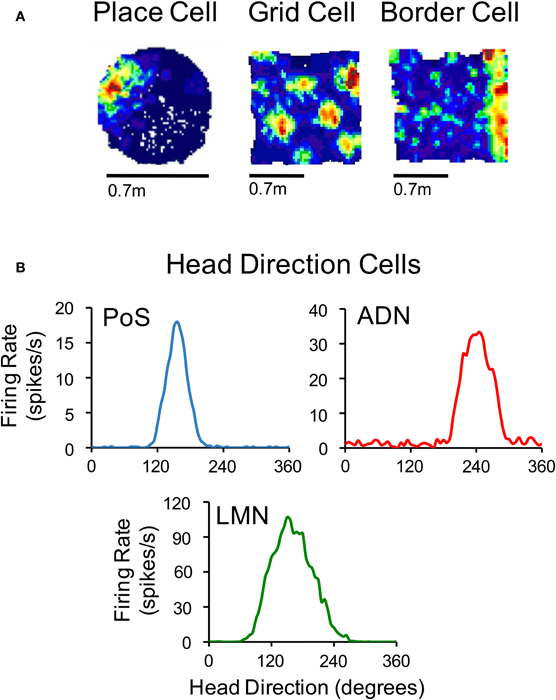Research in the Taube Lab centers around two main themes: The biological basis of spatial cognition and the neural correlates of learning and memory.
One cognitive function that we often take for granted is knowledge of where we are in our environment. Many investigators believe that we maintain a mental representation (or cognitive map) of our environment and that we depend on this representation to navigate our environment. How is this spatial information organized and processed in the brain? To pursue these questions we are using electrophysiological recording techniques to record from hippocampal formation neurons in behaving rats. Our previous work identified a population of cells in the rat hippocampal formation which discharged as a function of the animal’s head direction in the horizontal plane, independent of its behavior and location in the environment. For example, a particular neuron would discharge only when the animal’s head pointed northeast, while another neuron might discharge whenever the animal pointed its head west. My current research is designed to determine how the head direction signal is derived and processed from known sensory inputs. We have also examined the properties of these Head Direction cells in 3-dimensions (e.g., 0-gravity conditions during parabolic flight). The question being asked is: how is primary sensory information transformed into a signal which represents the animal’s directional orientation with respect to its environment? A second aim of my research is to determine the functional significance of the head direction cell signal to the organism; that is, how does an animal use these cells for orientation and navigation? In order to analyze the discharge characteristics of spatial cells using quantitative methods, an automated video/computer system is used to monitor neuronal discharge while simultaneously tracking the location and direction of the animal
In addition to these studies, we are also studying the properties of cells in the hippocampus whose primary behavioral correlates are often location-specific (ie., hippocampal neurons discharge as a function of the rat’s location in the environment and are mainly independent of the animal’s head direction). Below is an example of a Hippocampal Place Cell. We are also conducting experiments which investigates how the vestibular system interacts with the spatial processing system in the hippocampus. Specifically, we are exploring how the vestibular system influences spatial orientation and cognition. Several studies are also monitoring neuronal activity in limbic system structures as an animal learns a variety of behavioral tasks. More recently, we have recorded from grid cells in the entorhinal cortex and explored factors that critically influence their firing properties. Finally, the nature of the head direction signal makes it very conducive for modeling and future studies will use neural networks to try and simulate how neurons encode such a signal given the known sensory inputs.


